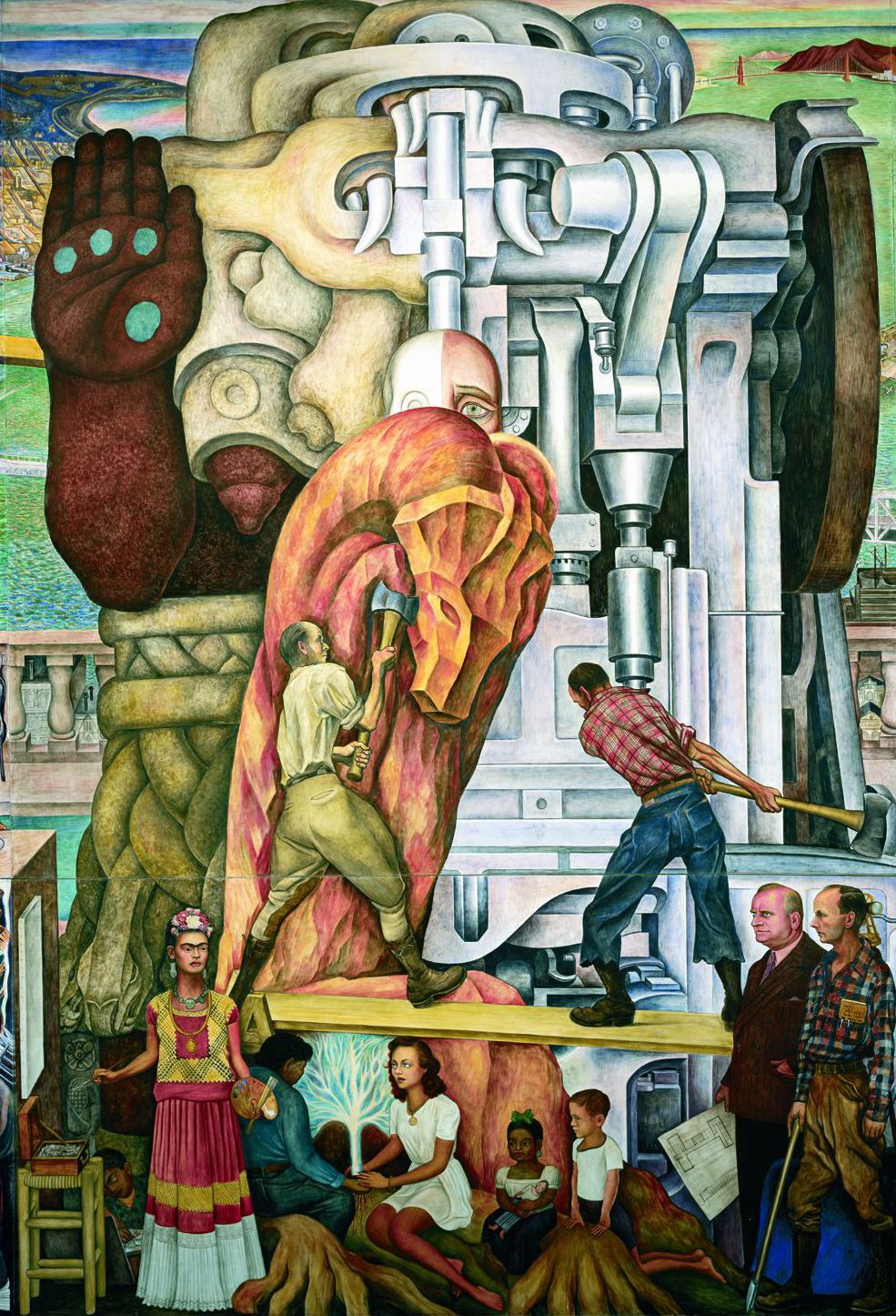It's not exactly easy to find.
You have to park on a nearby residential street, or take one of the many MUNI lines that lead to the Ocean Campus of the City College of San Francisco (or hoof it a half mile from BART). Walk onto campus through the main street of Phelan Ave. Once you pass the science building, take a right against a one-way street. Go up a small hill, walk through a quad on your left, and enter the non-descript theater. Finally, standing in the lobby, you'll get to revel in Diego Rivera's 74-foot Pan-American Unity Mural, a staggering work of artistic genius, and a gem of the San Francisco arts.
As an artist, Diego Rivera was one of Mexico's most celebrated. As a man, he was a 300-pound womanizer whose most famous relationship was marrying, divorcing, and then re-marrying Frida Kahlo.
His work helped to resurrect murals as an art form in Mexico. In 1940, he was commissioned by architect Timothy Pflueger design a mural as a part of the Golden Gate International Exposition on Treasure Island, and the end result was the Pan-American Unity Mural, his largest and most ambitious mural.
He painted Pan-American Unity in the traditional fresco style of the Italian Renaissance. The five panels celebrate the fusion of traditional Latino cultures and modern American innovation and engineering. They tell their own stories, and have names that sound like Sufjan Stevens song titles, like "The Creative Genius of the South Growing from Religious Fervor and the Native Talent for Plastic Expression." The centerpiece is a mesmerizing depiction of the indigenous and modern blending seamlessly: it's half Aztec god Coatlicue, half auto plant stamping machine, and it's incredible.
The mural is massive, complex, and gorgeous. The colors are rich and full, and the figures are done in an enchanting blend of realism and abstract interpretation. It is ripe with political, artistic, and literary allusions. I was grateful to meet with William Maynez, who is both the head of the Physics Science Lab at the school, and also a local artist responsible for the care and preservation of the mural. With obvious glee, Maynez shared a handful of the countless stories behind the mural, including some of the most salacious, like Frida's love affair with Leon Trotsky, as well as Rivera's affair with Paulette Goddard, Charlie Chaplin's wife. Scandal!
Maynez takes pride in sharing the history behind the mural. "This mural is like a chain of people who have worked to conserve it," Maynez said. "It's on my watch now, and I want to collect as many stories about it as I can. All this stuff is like historical DNA."
Unfortunately, the mural is not exactly displayed in the manner that it deserves. Originally it was intended to stand in a grand library on campus, but plans for the library were scrapped when the US entered World War II. As it stands now, it's pretty hidden, and unlikely to attract random passersby. You need to know what you're looking for to go and find it. And as Maynez explained, "a rule of thumb is that you should be able to get as far away from a mural as it is wide in order to truly appreciate it and see it all at once." Which means that the best view of the Pan-American Mural would be 74 feet away, but the lobby area of the theater is probably only 20 feet at its widest.
Thankfully, there are plans to relocate the mural to a new building, one that allows for a more complete viewing experience. That reality is still a few years away, but in the meantime, it's still definitely worth a visit.
The Pan-American Unity Mural is located at the Ocean Avenue campus of the City College of San Francisco, located in the Diego Rivera Theater near the Creative Arts building. The viewing schedule for the mural is 10 a.m. - 4 p.m., Monday-Saturday. It's best to call ahead and make an appointment with one of the docents on hand, but you're welcome to walk through on your own as well.
Related Articles
